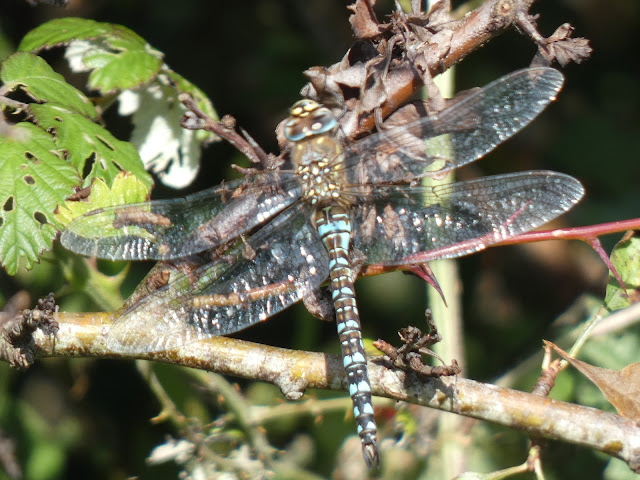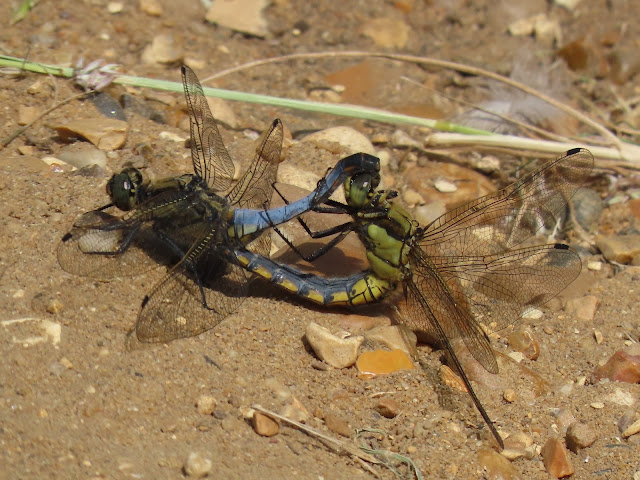The rain had stopped by dawn so John and I headed down to Radipole for some
pre-breakfast birding. Just by the visitor centre we located a roosting Cattle
Egret in the half-light of dawn and then a second one. These were the two regular birds that a local had
told us about when we were at Lodmoor. Except that two had now turned into
three! And there was a Great Egret as well.
 |
| Cattle Egret |
We carried on along the path to the observation platform and spent some
time there. Eventually the Cattle Egrets flew off north one at a time,
presumably to find a flock of cattle. The Great Egret also flew off in the same
direction but we could still see another one in the channel so we had five egrets and no
Littles.
 |
| Great Egret |
A few Mipits flew over but there wasn't much else happening and the lure of
bacon got the better of us so we returned to our B&B for another large
breakfast to set us up for the day. With the weather forecast looking decent,
but still fairly windy we settled on Plan A and
took a cab up to Portland Bill.
 |
| Portland Bill Lighthouse |
We first checked out the obs quarry but couldn't find the Little Owl so
carried on. A Wheatear showed briefly opposite the Pulpit Inn and a trio of
Siskin flew over. Mipits and Swallows flew over regularly in small numbers.
We found some shelter on the leeward side of the obelisk and settled in for
a seawatch. At first it was just a few Gannets and auks that flew past but we
eventually managed three Balearic Shearwaters and I also had a Pomarine Skua
that came in quickly, buzzed a few terns then was lost to view behind the
obelisk before the others could get on it.
 |
| Gannet |
A few Kittiwakes and Med Gulls were picked up along with some more auks,
including some close enough to be confirmed as Guillemots. Eventually numbness
set in and we decided to go for a walk up to the top fields. On our way we
found another Wheatear, two Stonechats and a Whinchat.
 |
| Wheatear |
There was an angry-looking squall offshore which we just caught the edge
off as we walked along the coastal path but it wasn't too bad. The local pair
of Ravens flew past.
 |
| Rain coming our way |
 |
| Raven |
We looked into a lot of fields and checked the hedges but
couldn't find any other grounded migrants so we decided to call it quits and
headed off to the bus stop and back into Weymouth. It was still sunny when we got back so we decided on doing a loop of
Radipole again. The only egret by the visitor centre was a single Little which
completed the set from earlier.
The sun had brought the insects out and there were lots of dragonflies, a
couple of Red Admirals and third brood of Common Blue. Find of the day went to
John when he located an Elephant Hawk-Moth caterpillar that looked like it was
getting ready to pupate.
 |
| Common Darter |
 |
| Red Admiral |
 |
| Elephant Hawk-Moth caterpillar |
The rain started again so we called it a day and retreated back to the
B&B for a rest before dinner.































